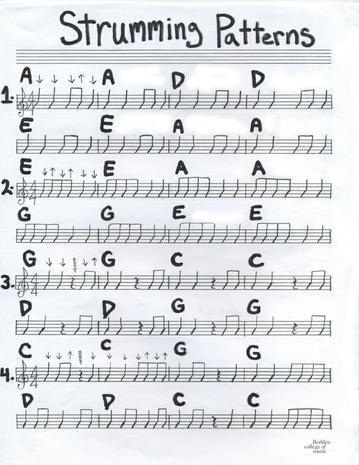Counting Rhythm
Back to Basics: Counting Rhythm
Hey guys, Dan here again with another mind-boggling article for y’all to wrap your ears/eyes/whatever around. Up to now, I’ve mostly done either gear based posts, or intermediate to advanced music stuff and something has occurred to me; what about the beginners? What about those brave rockers who are just starting out on their musical journey and need some help? You guys arguably need more help right? Well fear not beginners, I’m starting a new series called Back to Basics which is going to touch on the simple but essential tools that are necessary to get you’re skillz up. Today we’re looking at real doozy; Rhythm.
How to Count Rhythms
So it’s fairly simple, if you don’t know how to play in time, then you can’t play along to songs or with other musicians, and that would suck. Rhythm is the foundation that music is built on, so you can imagine that its pretty important right? At first, understanding rhythm can seem pretty daunting, but it’s actually pretty chill. We’re going to be looking at three of the big dawgs of time signatures used in music: 4/4, 3/4, and 6/4.
So what do these terms mean? Put simply, the two numbers in a time signature are there to tell you how many beats there are in each bar of music. So if we’re playing in 4/4 there are four quarter-note beats in each bar. Equally if we’re playing in 3/4 there are three quarter-note beats in a bar, and the same goes for 6/4 (six beats in a bar).
Counting Rhythms Practice
Now for some of you that will make total sense, for others it still may be confusing as to how those words help you count rhythm. So lets use a song that helps you understand it better.
This is “Do I Wanna Know?” by Arctic Monkeys. A song I’m sure most of you are familiar with. If we listen to the intro of the song we can hear a kick drum and a snare drum. If you focus in on the kick pattern you’ll be hear that it’s actually spelling out the time signature of the song, which is 4/4. You can almost count along with the pattern as it plays e.g:
//1, 2, 3, 4 // 1, 2, 3, BA-NA-NA-NAAA //
Counting rhythm is a simple as that!
Ok so no we’ve got an understanding of what it sounds like lets look at it written down:
As we can see, there are two crudely drawn bars of music here. We’re playing in 4/4 so there are four black dots (i.e quarter notes) in each bar. Those four dots are the anchor of the song’s time signature, what all other melody and rhythms used in the song will be based around. Going back to the Arctic Monkeys song as an example, if you listen to the snare pattern you’ll hear that it falls on the second and fourth beats of each bar. Part writing such as this is a really easy way to help understand how we use rhythm to help us write parts for songs. Lets try it with another time signature:
So now we’re playing in 3/4. For those of you unsure of what a 3/4 tempo feels like, listen to any waltz. The waltz is style of music based entirely around 3/4 signatures. It’s got a sort of Um Cha Cha feel if that helps at all. As we can see from this drawing, there are now only three beats in each bar, three quarter-note beats. 3/4, get it?
Finally lets look at 6/4
So 6/4 is slightly trickier to get your head around but stay with me. We know that the first number in our time signature denotes how many beats there are in a bar, so we know that there are six beats to each bar. The sharpest tools in the shed out there may have noticed that 6/4 is essentially the same as 3/4 because its just doubling the number of beats in a bar, and you’re right it is counted in a similar way, but its not the same. Because of the larger number of beats in each bar, it is still technically in three, but it’s got a much slower feel. Here are some examples to help you understand that better:
https://www.youtube.com/watch?v=tAGnKpE4NCI
So the Bob Dylan tune is in 3/4, and the Metallica tune is in 6/4. We can hear that because the Bob Dylan song feels like it has more pace about it. The song feels like it’s going somewhere quicker. Whereas the Metallica song has a much more laid back feel. You can count either song in either time signature, but trust me; you’d just be making more work for yourself if you do.
So yeah that’s basically an intro to counting Rhythm, not as scary as it sounds is it? There’s more daunting time signatures out there like 7/8 or the very unnerving 5/4, but we’ll save those for another day. Happy counting!

